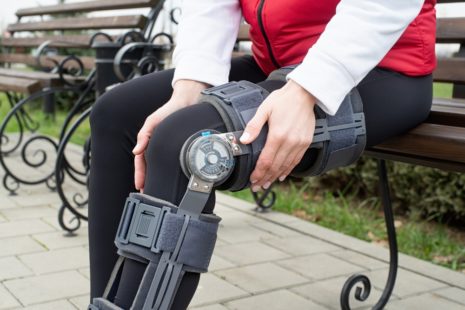A single-leg squat is an exercise commonly used in ACL (anterior cruciate ligament) rehabilitation to improve strength, stability, and neuromuscular control of the knee and lower limb. It helps individuals regain proper movement patterns and functional strength, which are essential for a safe return to activities, including sports.
Here’s how to perform a single-leg squat as part of ACL rehab…
Equipment – You can perform single-leg squats with little to no equipment. However, you can use a chair, bench, or stability ball for support or as a depth reference if needed.
Procedure –
- Stand on one leg with your core engaged and your shoulders relaxed. You can perform this exercise while holding onto a stable support (e.g., a wall or railing) for balance, especially if you are in the early stages of rehabilitation.
- Lift the non-weight-bearing leg off the ground and keep it slightly bent at the knee.
- Maintain good posture with your chest up, shoulders back, and eyes forward. Your knee should be aligned with your toes, and your hips should remain level.
- Slowly lower your body by bending at the hip, knee, and ankle, as if you’re sitting back into a chair. Keep the motion controlled and avoid going too low or beyond your comfort level.
- Aim to lower yourself as far as you can while maintaining good form. Focus on maintaining balance and stability throughout the movement.
- Push through your standing heel and engage your quadriceps and glutes to return to the starting position.
- Perform the desired number of repetitions (usually 8–12 reps per set) on one leg before switching to the other.
Tips –
- Start with a chair or bench behind you to act as a reference point for how low to go. Gradually decrease the depth of the squat as your strength and stability improve.
- Focus on proper form and control rather than depth. It’s more important to perform the exercise correctly and safely.
- Use a mirror or a physical therapist’s guidance to ensure proper form.
Single-leg squats are just one component of a comprehensive ACL rehabilitation program. These exercises are often part of a larger plan designed to address muscle imbalances, improve joint stability, and enhance neuromuscular control. Always perform these exercises under the guidance of a physical therapist or healthcare provider to ensure they are appropriate for your stage of recovery and are executed correctly.




